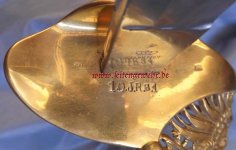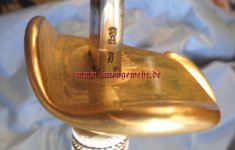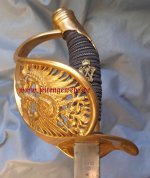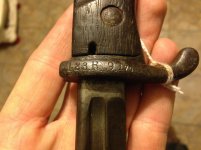Spartaner545
Senior Member
Hello Guys,
as promised i asked some german collectors about this stamp. While this unit marking is not stamped recording to the regulations it seems to be a variant that the east asian infantry regiments used. So this marking is not a fake but rather a curiosity.
A big thank to the user "Ulfberth" from the deutsche-blankwaffenforum for the solution and the other pictures. You can see his many articles about german edged weapons on his website http://www.seitengewehr.de.
As a comparison i will add some pictures of the very rare east asian infantry officer sword from his collection. It features the same markings as the shown rifle.
With kind regards
Vincent
PS: I would have never thought that this was a legitimate unit marking... not the right hight and not marked according to regulations but we all never stop learning.
as promised i asked some german collectors about this stamp. While this unit marking is not stamped recording to the regulations it seems to be a variant that the east asian infantry regiments used. So this marking is not a fake but rather a curiosity.
A big thank to the user "Ulfberth" from the deutsche-blankwaffenforum for the solution and the other pictures. You can see his many articles about german edged weapons on his website http://www.seitengewehr.de.
As a comparison i will add some pictures of the very rare east asian infantry officer sword from his collection. It features the same markings as the shown rifle.
With kind regards
Vincent
PS: I would have never thought that this was a legitimate unit marking... not the right hight and not marked according to regulations but we all never stop learning.
Attachments
Last edited:




 ) that i personally would never buy a weapon with a non-regulation unit marking again. It is so much harder to fake unit stamps within the regulations...
) that i personally would never buy a weapon with a non-regulation unit marking again. It is so much harder to fake unit stamps within the regulations... 